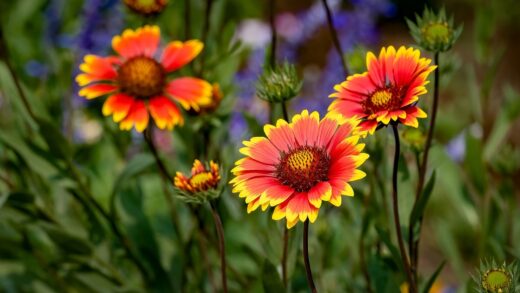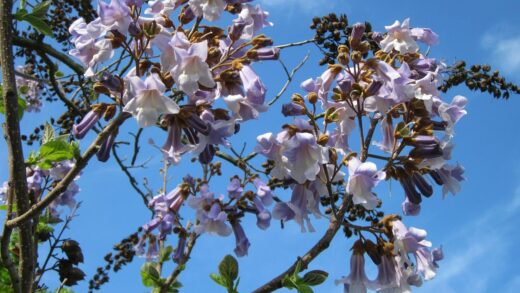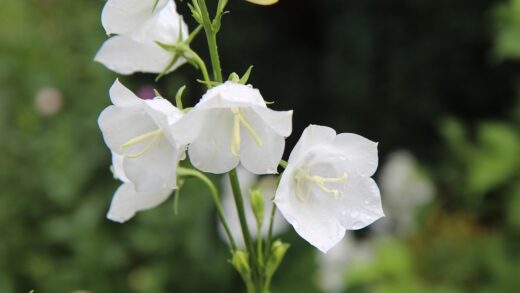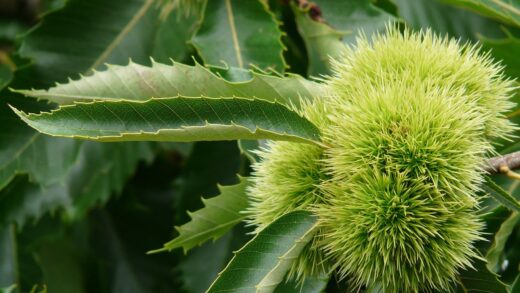The successful establishment of a quince tree begins with thoughtful planning and proper execution of the planting process. Selecting an appropriate site and preparing it meticulously are foundational steps that will profoundly influence the tree’s health, vigor, and future productivity for decades to come. Propagation, the creation of new trees, offers a fascinating avenue for expanding an orchard or sharing a prized variety with fellow gardeners. Whether starting with a nursery-grown sapling or propagating from an existing tree, understanding the specific requirements of quince is paramount to ensuring the young plants not only survive but thrive, quickly developing into robust, fruit-bearing specimens.
Choosing the right location is the first critical decision in the planting journey. Quince trees require a spot that receives at least six to eight hours of direct sunlight per day, as ample light is essential for photosynthesis, flower development, and proper fruit ripening. The chosen site should also offer protection from strong, persistent winds, which can damage blossoms, break branches, and desiccate the leaves. Furthermore, it is important to consider the tree’s mature size, ensuring there is adequate space for it to grow without crowding buildings, power lines, or other trees, which could lead to poor air circulation and increased disease risk.
Soil preparation is equally as vital as site selection for giving a young quince tree the best possible start. The ideal soil is a well-draining loam rich in organic matter, which provides both the stable footing and the nutrient reservoir the tree needs. Before digging the planting hole, it is wise to amend the soil in a wide area around the planting site with compost or aged manure to improve its structure and fertility. This encourages the roots to venture out from the initial planting hole into the surrounding soil, fostering a more extensive and resilient root system that is better equipped to find water and nutrients.
The actual planting procedure must be done with care to avoid damaging the young tree and to ensure its roots make good contact with the soil. The planting hole should be dug two to three times wider than the root ball but only as deep as the root ball itself. This allows the roots to spread out horizontally into loosened soil. It is crucial to set the tree in the hole so that the graft union—the swollen point near the base of the trunk where the scion was joined to the rootstock—remains well above the final soil level to prevent scion rooting and potential collar rot issues.
Selecting the right variety and rootstock
The first step in establishing a successful quince orchard or even a single backyard tree is the careful selection of a suitable variety. Quince varieties differ in several key characteristics, including fruit size, shape (apple-shaped or pear-shaped), flavor, and ripening time. Some popular cultivars include ‘Smyrna’, known for its large, flavorful fruit, and ‘Champion’, which is prized for its productivity and good storage qualities. Consider the intended use of the fruit—whether for jellies, preserves, or baking—and the local climate’s growing season length when making a choice, as some varieties mature later than others.
More articles on this topic
Equally important is the choice of rootstock upon which the desired quince variety is grafted. The rootstock is the root system and lower part of the trunk of the tree, and it has a profound influence on the tree’s ultimate size, disease resistance, and adaptability to different soil conditions. For quince, common rootstocks include Quince A (QA), a semi-dwarfing rootstock that is widely used and adaptable, and Quince C (QC), which produces a more dwarfed tree suitable for smaller gardens or high-density plantings. The rootstock choice directly impacts the tree’s vigor, so it is essential to select one that matches the available space and management goals.
When purchasing a young tree from a nursery, it is crucial to inspect it carefully for signs of good health. Look for a well-developed, balanced branch structure and a straight trunk free from any wounds or cankers. The tree should have a robust root system that is not pot-bound, meaning the roots should not be circling densely around the inside of the container. A healthy nursery tree will establish more quickly and be more resilient to the stresses of transplanting, setting a strong foundation for its future growth and fruit production in the garden.
Furthermore, it is important to consider the pollination requirements of the selected variety. While most quince varieties are self-fertile, meaning they can set fruit with their own pollen, yields are often significantly improved with cross-pollination from a different quince variety planted nearby. Planting two or more different cultivars can lead to a more reliable and abundant harvest. Researching the specific pollination needs of a chosen variety is a small step that can pay large dividends in terms of fruit set and overall productivity.
The optimal planting process
The ideal time to plant a bare-root quince tree is during its dormant season, typically in late autumn after the leaves have dropped or in early spring before the buds begin to swell. Container-grown trees offer more flexibility and can be planted throughout the growing season, although spring and early autumn are still preferred to avoid the extreme heat and stress of mid-summer. Planting during the dormant period allows the tree’s root system to begin establishing itself in the new location before the energy demands of leaf and shoot production begin in the spring.
More articles on this topic
When preparing to plant, the hole should be excavated to be significantly wider than the root ball, but no deeper. A common mistake is to dig the hole too deep and place loose soil at the bottom, which can settle over time and cause the tree to sink, burying the graft union. The width of the hole is more important, as it provides a volume of loosened soil that encourages the new roots to spread horizontally. The sides of the hole should be roughened with a shovel to prevent the roots from being confined as they would be in a smooth-sided pot.
Before placing the tree in the hole, gently tease out any circling roots from the root ball to encourage them to grow outwards into the surrounding soil. For bare-root trees, create a small mound of soil at the bottom of the hole and spread the roots evenly over it. The tree should be positioned in the center of the hole at the correct depth—the point where the roots flare out from the trunk should be at or slightly above the level of the surrounding ground. Using a straight edge or a shovel handle placed across the hole can help to accurately gauge the correct planting depth.
Once the tree is positioned correctly, begin backfilling the hole with the original, unamended soil. Gently firm the soil around the roots as you fill the hole to eliminate any large air pockets, which can dry out the roots. It is generally not recommended to add fertilizer or large amounts of compost directly into the planting hole, as this can discourage the roots from growing beyond the enriched area. After the hole is completely filled, create a shallow basin or ‘water well’ around the base of the tree to help direct water to the root zone and water the tree thoroughly to settle the soil.
Propagation through cuttings
One of the most reliable and common methods for propagating quince is through hardwood cuttings. This technique involves taking cuttings from a healthy, established quince tree during its dormant season, typically in late autumn or winter after the tree has lost its leaves. Select one-year-old wood, which is the growth from the previous season, and choose straight, healthy shoots that are about the thickness of a pencil. Each cutting should be approximately 20-30 centimeters long and should be cut just below a bud at the base and just above a bud at the top.
Preparing the cuttings correctly is crucial for successful rooting. A clean, angled cut at the base of the cutting increases the surface area for root formation. To further enhance the chances of success, the basal end of each cutting can be dipped into a rooting hormone powder or gel. This substance contains synthetic auxins that stimulate adventitious root development. After treatment, the cuttings are ready to be placed in a suitable growing medium to encourage them to form roots over the coming months.
The prepared cuttings should be inserted into a well-draining rooting medium, such as a mixture of coarse sand and peat moss or perlite and vermiculite. They should be pushed into the medium so that about two-thirds of their length is buried, with at least one or two buds remaining above the surface. The cuttings can be placed in a cold frame, a sheltered nursery bed outdoors, or in deep pots. It is important to keep the medium consistently moist but not waterlogged throughout the winter and spring, as desiccation is a primary cause of failure.
With patience and proper care, the cuttings will begin to develop a callous at their base, from which roots will eventually emerge as temperatures warm in the spring. At the same time, the buds above the surface will begin to swell and break into leaf. It is important not to disturb the cuttings during this critical rooting phase. Once they have developed a substantial root system and are showing vigorous top growth, which may take several months, they can be carefully transplanted into individual pots or a nursery row to grow on for another year before being planted in their final location.
Grafting techniques for quince
Grafting is a highly effective horticultural technique used to propagate quince, allowing a grower to combine the desirable fruiting characteristics of one variety (the scion) with the advantageous traits of another’s root system (the rootstock). This method is essential for commercial production and for gardeners who wish to grow a specific cultivar on a rootstock that controls size or provides tolerance to certain soil conditions. Successful grafting depends on aligning the cambium layers—the thin green layer of active cell growth just beneath the bark—of both the scion and the rootstock, as this is where the vascular tissues will fuse and grow together.
A common grafting method used for quince is whip-and-tongue grafting, which is typically performed during the dormant season in late winter or early spring. This technique creates a strong, interlocking union that heals quickly and provides excellent structural integrity. It involves making a long, sloping cut on both the rootstock and a scion piece of a similar diameter, followed by a second, shorter cut or ‘tongue’ into the face of the first cut on each piece. The two pieces are then fitted together, aligning the cambium layers as closely as possible on at least one side.
After the scion and rootstock are perfectly fitted together, the graft union must be securely wrapped and sealed. This is traditionally done using grafting tape or budding strips, which hold the pieces firmly in place and maintain the critical contact between the cambium layers. The entire union, including the cut tip of the scion, is then covered with grafting wax or a sealing compound. This seal is vital as it prevents the delicate tissues of the graft union from drying out and protects the wound from water ingress and potential diseases while the two parts heal and fuse into a single, functional plant.
Patience is required after the grafting process is complete. The newly grafted trees should be kept in a controlled environment, such as a greenhouse or a nursery bed, where they can be monitored closely. As spring progresses, successful grafts will show signs of life as the buds on the scion begin to swell and break into leaf, indicating that a vascular connection has been established and the scion is receiving water and nutrients from the rootstock. Any growth that emerges from the rootstock below the graft union should be promptly removed, as it will compete with and can eventually overtake the desired scion variety.


















